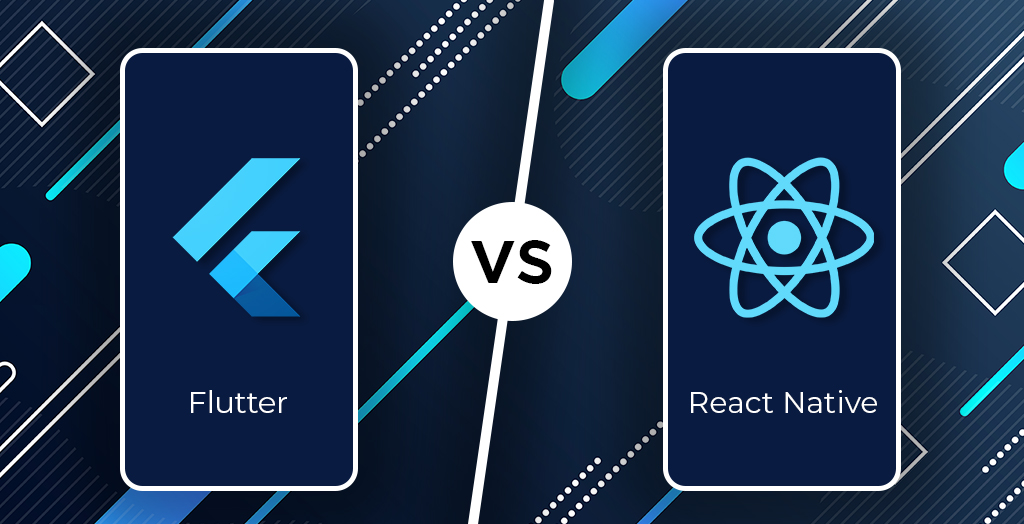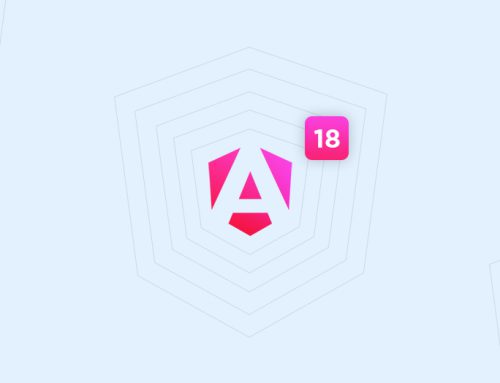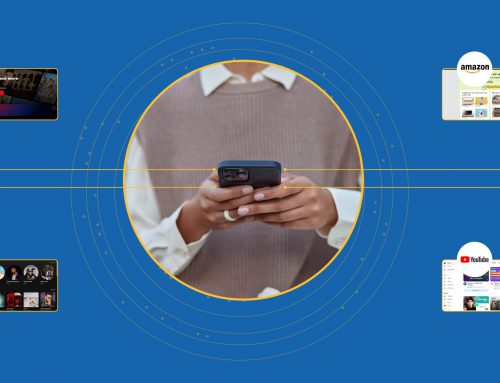Table of Contents
The battle between Flutter and React Native often boils down to some critical factors like performance, community, learning curve, and cost. React native has been known for its flawless performance as well as the humongous community while Flutter, owing to the use of the latest programming language and efficiency, is considered a promising technology for the future.
Both have their fair share of advantages to look upon, hence, choosing between the two most popular cross-platform app development frameworks – React Native and Flutter, creates an utter embarrassment of riches for the developers. If you are also one of them and struggling with choosing the best from the best, having no option but seeking suggestions from others to settle on a choice, you are in the right place.
The article will take you through all the major verticals of the frameworks, bringing their strength and weakness to light. By the end, you will be able to pick the best-fit framework for your application yourself, instead of blindly settling on others’ recommendations.
But, before we head further with the comparison, acquaint yourselves with the basic definitions. If you know it already, skip to the comparison part-
-
What is the Cross-Platform App Development Framework?
There are 2.7 billion smartphone users across the globe, spending 90% of their mobile time on the applications. The numbers say quite a lot about the rising popularity of the applications among the users. However, quenching such a huge demand for the two most popular platforms- iOS and Android, and developing the same application for two different platforms is a real challenge. Cross-platform Application development works here, allowing you to code once and run anywhere. There are numerous cross-platform app development frameworks available in the market, such as- React Native, Flutter, Ionic, PhoneGap, Cordova, xamarin, etc.
-
What is React Native?
React Native, which works on the philosophy Learn Once Run Anywhere, is a Facebook product developed in 2015. React Native is an open-source cross-platform app development framework that is used to develop iOS and Android applications with a single codebase. The most appealing factor about React Native is that it is written in Javascript, which renders with the native code. Having strong backing from an extremely popular organization Facebook, React Native a huge community to help you with related issues.
-
What is Flutter Framework?
Flutter is an open-source cross-platform app development framework that creates natively compiled apps for mobiles, desktop as well as the web in one go that is with a single codebase. Flutter was developed by Google in May 2017, since then it has been gaining immense popularity. Some famous companies using Flutter- Alibaba, Google, CapitalOneReflectly, Hamilton Musical, eBay, BMW.
To know more about Flutter, Check this out:
React-Native vs Flutter Framework
When it comes to deciding the best cross-platform app development framework for your application, Flutter and React Native is often the front-runners. Let’s dig a little deeper to evaluate frameworks on some of the prominent parameters-
-
1. Architecture
React Native works on the idea of using the native component itself in the application instead of replicating it. The framework is divided into 3 major parts- JavaScript Thread, Native Thread, and the bridge. The JavaScript thread runs the JavaScript code, the native thread executes the native code and the bridge works as a common communication point for both the threads. Every time you want to access the native component through javascript code, you have to pass the JSON request through the bridge, creating a restriction for the speed of execution.
Unlike React Native, Flutter does not require any bridge for communication. The flutter framework works differently. The app requests to access the native components, the platform creates widgets for the same. The widgets are directly rendered to the screen, without the need to pass through any sort of bridge. This enhances the app performance.
-
2. Documentation
Both React Native and Flutter come with decent documentation. However, the factor that creates a difference between both, is the level of detail. Flutter comes with very comprehensive documentation, making it suitable for all types of users from a fresher to expert, which is touted by Flutter as well.
On the flip side, React Native comes with advanced-level documentation, which requires you to have a basic technical aptitude. Though it proves to be useful for the experts, freshers face difficulty to understand and develop an application with the framework.
-
3. User Interface
To create a native feel, React Native makes the use of native components, rendering it both for Android and iOS, hence creating a native feel for the users with the application. To help you with this, React Native avails numerous ready-made components and UI Kits. However, as React Native compiles to the native widgets, it needs to go through the bridge, resulting in slower rendering. Also, due to a huge dependency on the native components, the UI of the application tends to differ in appearance over different platforms.
Flutter, using Dart, compiles directly to the native code. Therefore, it does not require any bridge to communicate with native components. The biggest advantage of using Flutter is that it comes with built-in UI components, called widgets that can be used in the application. The widgets reduce the dependency on the native component, allowing the application to work independently as well as reducing the process cycle. Hence, you get to see the same UI on every platform, that too faster.
-
4. Programming Languages and Learning Curve
React native uses one of the most popular programming languages- JavaScript, which is used by 67.7% of the developers. Being in the market for two decades now, most of the developers know it well. Hence, learning React Native becomes easier for them, however, if you are new to JavaScript, you will have to get to the roots and nitty-gritty of the language.
Flutter is based on a relatively new programming language- Dart, which was released in 2013. Dart is an object-oriented language, which is known for its speed. Dart proves to be extremely useful for multi-platform app development, as it compiles to both JavaScript as well as native code. So, if you have ever tried your hands on Java and C# and are acquainted with the basics of object-oriented programming concepts, Dart will be easy to learn.
-
5. Community Support
Be it a programming language or a framework, community support is imperative to developers. The community proves to be extremely helpful for the developers, resolving their issues as well as proving various resources like study material, videos, podcasts, and tutorials related to the framework.
React Native, being more seasoned than Flutter has a wider community, making it more convenient to use. Flutter also has a reliable community, however, being comparatively new in the market it is still growing. Additionally, strong backing from the tech mammoths like Google and Facebook strengthens the Flutter and React Native community even more. Having creative, innovative, and intellectual brains at the back promises a flawless framework as well as great support to the developers.
-
6. Performance
Using a blazingly fast language like Dart, UI widgets, 2D rendering engine- Skia, as well as eliminating the use of bridges while interacting with the native components, gives an edge to Flutter over React Native as far as performance is concerned. Flutter, with impeccable architecture, excels in speed with 60-120 fps as well as efficient UI rendering.
On the flip side, the bridge used in React Native tends to slow down the app performance, affecting its UI rendering as well. Although you can use the third-party libraries to improve the performance, it cannot help in matching Flutter’s performance standard.
-
7. Code Maintainability
Code maintenance is very important to keep your application updated and flawless functioning. As React Native uses the native components and also depends extensively on the third-party libraries, code maintainability becomes a difficult process. Sometimes, a defect or error in the library might affect the app performance. Code maintainability with Flutter is comparatively easy, owing to its efficient performance, self-sufficiency, as well as stateful hot reload. Lesser external dependency
-
8. Hot Reload
Both React Native and Flutter come with the hot reload feature. The core idea behind this feature is live code updation. Hot reload empowers you to update your app code during run time, which promptly starts reflecting in your app. You need not return to the previous state to deploy changes, rather it reflects on the go, saving the developers time.
React Native uses JavaScript, which is a stateful language, hot reloading does not work efficiently. Flutter, on the other hand, uses Dart and the changes are directly injected to DVM(Dart Virtual Machine), making the reload process more efficient and speedy. Flutter offers stateful reload, preserving even the most nested state of the application. Hence, once again owing to its fast compiling language as well as faster rendering, the hot reload feature in flutter is faster than that of React Native.
-
9. Popularity
According to GitHub,
- Flutter received 106K stars, 3.3K watches, 14.8K forks
- React Native received 91.2K stars, 3.7K watches, and 20.2K forks
According to Statista report 2020,
- React Native is preferred by 42% of the developers.
- Flutter is preferred by 39% of the developers.
The numbers indicate the soaring popularity of the frameworks. React Native and Flutter are very close to each other in terms of popularity. Where Flutter wins the GitHub popularity race, React Native constantly holds the first position in the Statista report continuously for 2 years.
Though React Native, being for a longer time the market, has been considered the most popular framework of 2020, which is reflected by its gigantic community support as well, the growth in Flutter’s popularity can not be overlooked either. Flutter, like it’s speedy performance, is also speeding in gaining popularity. According to Statista, within a year the graph has ascended from 30% to 39%, whereas React Native is consistent at 42%.
-
10. Testing Support
Testing is critical to app performance, helping you to create a bug-free application. React Native provides support for unit testing for various app components, however for UI testing you need to use third-party testing tools like Detox and Appium.
On Contrary, Flutter comes with rich testing features for all the application levels such as unit level, widget, and integration or the user interface level. Along with this, the detailed documentation makes the testing process more convenient and efficient.
Which framework should you choose?
The comparison made here isn’t to announce a winner or loser, indeed, none of them can be declared so. Both of them have their strengths and weaknesses. You need to comb through each vertical and pick the best fit for your application based on your goals.
By now, you might have made up your mind, however, if, still on the fence, reach out to our experts. Having years of experience in the mobile app development field and having tabs on the latest market trends, our experts will not only help you choose the best framework for your application based on your business goals but also create an incredible application that stands out among the crowd. So, wait no more, Hire flutter developers from Top Flutter App Development Company.

























